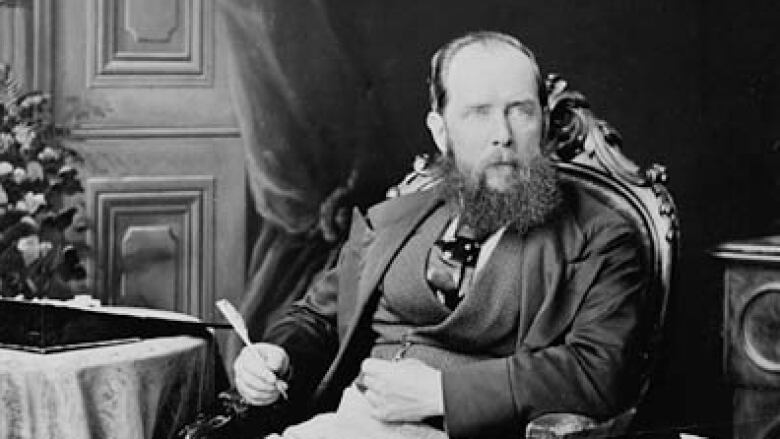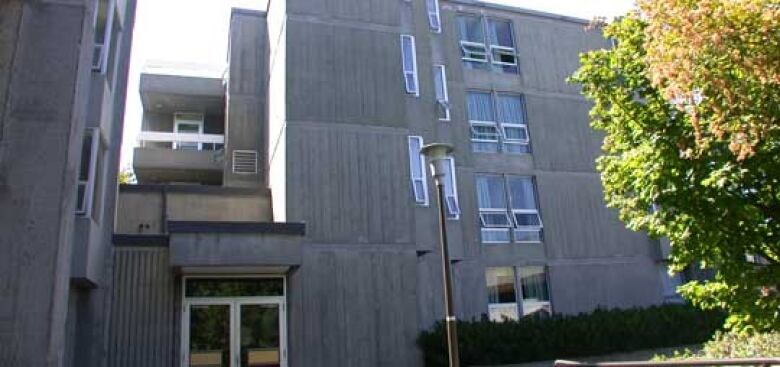UVic to rename Trutch building because of colonial politician's racist legacy
Joseph Trutch, B.C.'s first lieutenant-governor, has legacy of denying First Nations land rights

Joseph Trutch is remembered as B.C.'s first lieutenant-governor, an engineer and commissioner of public works.
But he is also remembered as a man who trampled over the rights of B.C.'s Indigenous peoples in the 19th century, which is why the University of Victoria is removing his name from one of its residence buildings.
UVic's board of governors made the decision last week after what one former student says was a years-long campaign.
"When I was elected, it wasn't a new topic. ... There's this ugly name for this building on campus that really touches a lot of hearts in terms of the legacy of that name," said Blake Desjarlais, a former member of UVic's Native Student Union.
"Students who are there now and students who will be going there will definitely see a benefit in terms of how they identify with the space."

Trutch would not recognize Indigenous land rights and made it a policy to restrict Sto:lo families to occupying a maximum of 10 acres of land.
He also reduced the size of reserves established by Gov. James Douglas by up to 92 percent.
"He seems to have been a really extreme version of the attitudes of the time in terms of thinking that native people were non-people," author Michael Kluckner said in 2012.
History magazine The Beaver assembled a list of the "Worst Canadians" in 2007 and Trutch made the historian-penned list.
Despite this, the Trutch name appears throughout B.C.: streets bear the name in Vancouver, Victoria, Chilliwack and Richmond, and Trutch Creek can be found in Northern B.C.
Vancouver Coun. Andrea Reimer says the city is starting a process of renaming some city streets, in part to reflect Indigenous communitiesbut would not commit to renaming any particular streets.

The university hasn't decided on a new name for the building yet. The building will temporarily be known as Lansdowne Residence Number 1.
"We have yet to decide what the process will be to select that new name," said UVic Vice President External Carmen Charette. "That's what we'll be working on in the near future."
Desjarlais says he hopes local First Nations can provide input for the building's new name.
Statue of Judge Begbie removed
In a similar move earlier this week, the Tsilhqot'in Nation commended the Law Society of British Columbia for removing the statue of a controversial, historic judge from its lobby.
The society previous featured the statue of Judge Matthew Begbie, who wrongfully convicted six Tsilhqot'in War Chiefs of murder in 1864, sentencing them to death by hanging.
The law society announced in April that it would remove the statue that is a negative symbol of the province's colonial past and replace it with a more inclusive image.
At the time, Law Society President Herman Van Ommen said the move is an important step in the journey toward reconciliation with Indigenous peoples in B.C.
Chief Joe Alphonse said the Tsilhqot'in continue to honour the six War Chiefs for who defended their territory and traditional way of life against a foreign aggressor.
The First Nation is calling on the provincial government to follow the Law Society and remove Begbie's name from all public places, which include at least one public school.
In the New Orleans. the removal of a statues of four monuments to confederate leaders because of their racist legacies has also recently provoked controversy.
With files from Elizabeth McArthur, Belle Puri and The Canadian Press












_(720p).jpg)


 OFFICIAL HD MUSIC VIDEO.jpg)
.jpg)



























































































